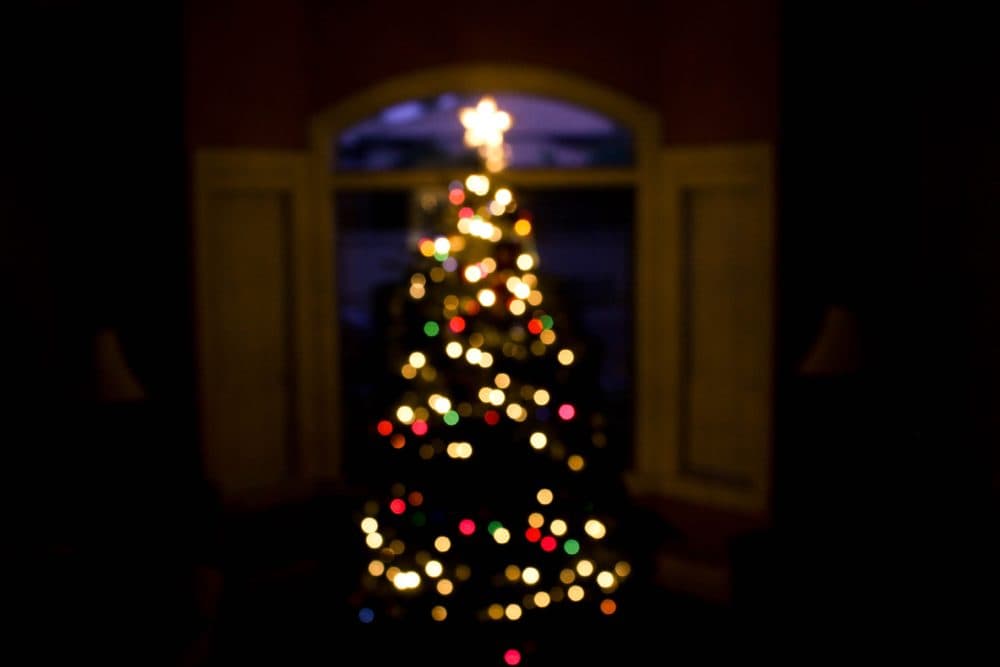Advertisement
Commentary
The Christmas Tree I Never Had

Sometime after having a child in her early 40s, one of my good friends got a Christmas Tree for the first time. I was shocked and yes, disapproving. Though neither of us were or are particularly observant, we are Jews nonetheless, so this purchase felt like a sort of betrayal.
Of course, I understood the impulse. As a kid growing up, first in Montreal, then in Michigan, I’d admire the lights adorning peoples’ homes and peer covetously through their windows every December.
It wasn’t the sight of hanging stockings or stacked up presents that so attracted me. My extended family had two Hanukkah parties every year that I was sure rivaled, even out-thrilled, anyone else’s Christmas morning. We got both the magical gifts (a toy farm set, a nested Russian doll, a "Man from UNCLE" poster) and the ridiculous ones that have fueled family lore ever since. (My mother maintained until her last days of life that she genuinely thought my brother liked Frank Sinatra, and my cousin Harriet insists that she was not the one to have given him a brightly-wrapped edition of "The History of Torture.")
Nor was it the music that I felt excluded from; we happily sang the Christmas classics with our friends, unburdened by their meaning, including on some magical nights of caroling.
As for Santa Claus, meh. I never understood his appeal; he seemed sort of one-dimensional to my young but critical eye. And likewise, a Christmas ham dinner was no more attractive than Salisbury Steak.
Hanukkah was just fine with me. We had candles to light, songs to sing, dreidels to spin, chocolate gelt to eat (worlds better than a yucky fruitcake), and salty, crispy latkes to shred, shape and fry.
But Christmas always had one forbidden enticement: the evergreen. The world of Christmas Tree ornaments was vast, diverse and alluring. The stars and angels and gaudy, shiny balls meant nothing to me, but the brightly painted wooden figures of skaters and snowmen, the delicate clear glass snow globes and spheres within spheres — they enchanted. And the sheer audacity of anchoring an entire tree in your house, of putting on your boots and taking them off, of doing your homework or watching "Bonanza" and "The Ed Sullivan Show" all in a home scented by pine needles — I longed to experience that.
Christmas always had one forbidden enticement: the evergreen.
Still, even when I was an adult, living in my own house, far from the Jewish enclave in which I’d grown up, I couldn’t bring myself to get a Christmas tree. I flirted with it one year, buying a wreath (from which I doggedly stripped the red ribbons) and hanging it on the inside of our front door. But its green aroma faded within 48 hours, and with each passing day, I felt more and more as though I’d kidnapped something young and wild, then left it to suffer a slow, meaningless death.
When my husband and I had children of our own, we continued to resist the lure of the Christmas Tree and instead preserved and invented some Hanukkah rituals of our own: hauling out my grandmother’s MixMaster once a year to shred and mix potatoes for latkes, spinning dreidels for gelt every night, alternating which child got to light the shamash candle, giving big presents on the first night and the last, and on one of the eight nights, giving a sizeable donation made in the kids’ names to the charity of their choice. (If endangered elephants, whales and gorillas can be religious, I’m confident that my daughters’ zeal over the years made Jews of at least some of them.)
Advertisement
But in retrospect, I realize that we were doing something more than hopefully creating some continuity and happy memories. We were, in some small way, reminding them and ourselves of how it felt to be the “other,” to be a minority in a Christian-dominated country with a culture of benevolent cheer, generosity and self-referential assumptions about what was “normal.” By refusing to fully assimilate, we were unintentionally but fortunately teaching our children the resilience and empathy that is nurtured by not fitting in.
I see that legacy today in one of my granddaughters. While socially awkward at a younger age, now she is a confident non-conformist purely for the sake of being a non-conformist. I admire the grit in that, and her comfort with diversity that it’s fostered.
So once again, this holiday season I’ll admire the lights of my neighbors, bask in the cheer and aroma of their glittering adornments, revel in the friendship of Christian friends who have welcomed me into their homes, and force myself to suck down that hideous concoction known as Egg Nog. And then, in the brilliant blue of a cold winter day, I’ll go for a walk in the woods. I’ll be an appreciative foreigner in the trees’ land.
